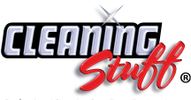![]()
Cheetah Pads combo set diamond resin bonded concrete and stone floor restoration 20 inch one pad of each Step 1 thru 4 case of 4 pads CP20S
Cheetah Pads - The Fastest Stone Restoration System On The Planet!
This Cheetah Pad Combo Kit Contains The Following Pads:
- 1 Each Step 1
- 1 Each Step 2
- 1 Each Step 3
- 1 Each Step 4
Full restoration system for marble, travertine, limestone, terrazzo and Polished Concrete.
Cheetah Pads are designed to take the place of traditional metal and resin bond diamonds, polishing compounds, pastes, and crystallizers. Using the Cheetah Pad system can reduce your job time and labor costs by up to 70 percent. No chemicals are required, all polishing and restoration is done with 100 percent mechanical abrasion, all you need is water! The Cheetah Pads are able to deliver very consistent results that match and in many cases exceed the quality of standard factory finished stones! Limestone, Travertine, Cement Terrazzo and Polished Concrete may need Hardener and/or Nano Guard to achieve high Gloss finish. The 17 inch and 20 inch pads are designed to be used with a 175- 300 rpm standard floor machine. Eco-friendly!!
Equipment needed for floor restoration: a machine - the pads will work with all of the following types - a standard 175 rpm floor buffer, orbital machines, planetary machines, or any oscillating machines (rectangular). Rinse tool/portable- we strongly recommend a 4 jet squeegee wand, microfiber cloths. (Do not use any rinse tool with a brush or spinner or plastic that contacts the floor).
Equipment needed for countertop/vertical surface restoration: Any variable speed hand polisher a 4 inch or 7 inch backer pad, squirt bottle and a hand squeegee, microfiber cloths We recommend using low speed - 600 rpm or less is fine.
Cut Pattern and traditional diamond comparison:
- Step 1 - equivalent to 50, 100, 200, 400 grit diamonds (for example, the step 1 pad will cut like a traditional 50 grit diamond but leave the scratch pattern of a 400 grit diamond)
- Step 2 - equivalent to 100, 200, 400, 800 grit diamonds
- Step 3 - equivalent to 400, 800, 1500, 3000 grit diamonds
- Step 4 - equivalent to 3000, 8000 grit diamonds
Using weights: You do not need extra weight to perform restoration on most surfaces, however it will speed up the cutting time. We most often suggest using approx. 30 lbs. For harder stones, such as green marble, use additional weight. When doing soft stones, such as limestone, do not use additional weight.
Proper storage: Rinse your pads out thoroughly and store in a breathable bag or box to avoid getting them contaminated. Contaminated pads will affect the final result. Always rinse from the backside of the pads so that abrasives and slurry rinse out.
Breakage: If a segment of your pad becomes detached, simply finish the job and you can reattach it with a little bit of gorilla glue. Allow to dry for 24 hours before next use. There is approximately 30 percent more material than necessary on the pads. The segments are designed to break apart and come off if you hit severe lippage or a corner. You want your pad to give instead of risking damage to a tile.
Colors and variation: The Cheetah pad system is completely hand-made. There may be a slight variation with the color of the abrasive segments and pads.
Break In: New pads do require a break-in period to aid in the release of the abrasives. You can use a neutral cleaner or alkaline stone cleaner diluted with water to speed up the break in time. Break in for approx. 50 ft.
30 Second Test : Select a 5 x 5 area and start with appropriate pad, when you have completed your passes repeat in one small area (approx 2 x 2 sq. ft) as a test area. If after rinsing, both areas look the same go on to the next step down. If the area that you worked for the extra 30 seconds looks better, you need to keep using the pad you are on at least one more pass or lengthen the time of the pass. This helps determine how many passes the stone you are working on will require. Repeat this 1 time on each step until desired results are achieved. This allows you to continue on the job knowing exactly how long and how many passes you need. The 30 second test tells you if the pad you are using has achieved its maximum result and how many passes you should do to get there. If you move up to the next step without getting the maximum result from the previous pad, the next pad will not compensate and be able to achieve its maximum result. This one mistake will extend work time and not produce the maximum results.
To View Product Brochure(CLICK HERE)








